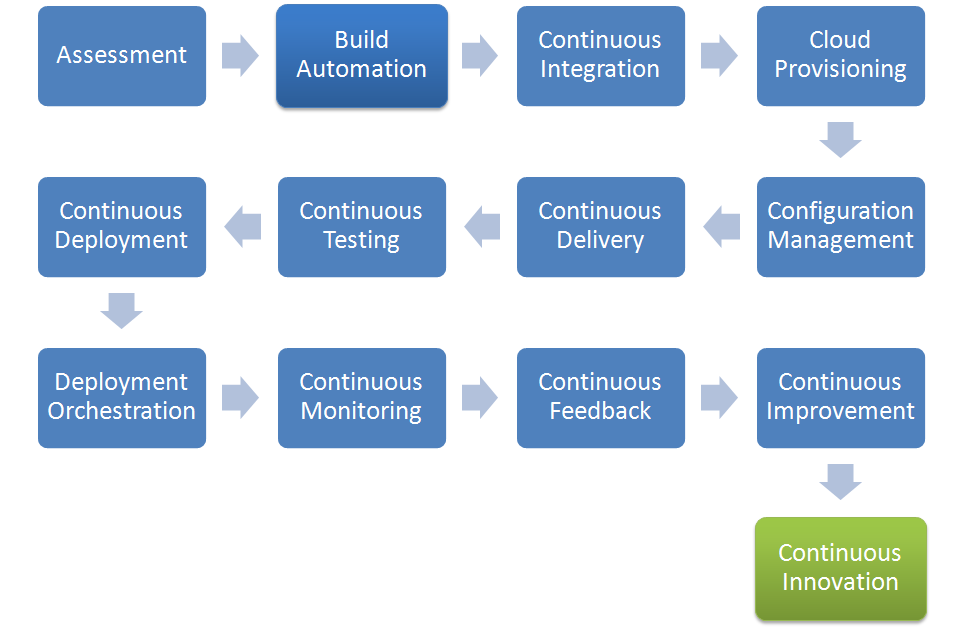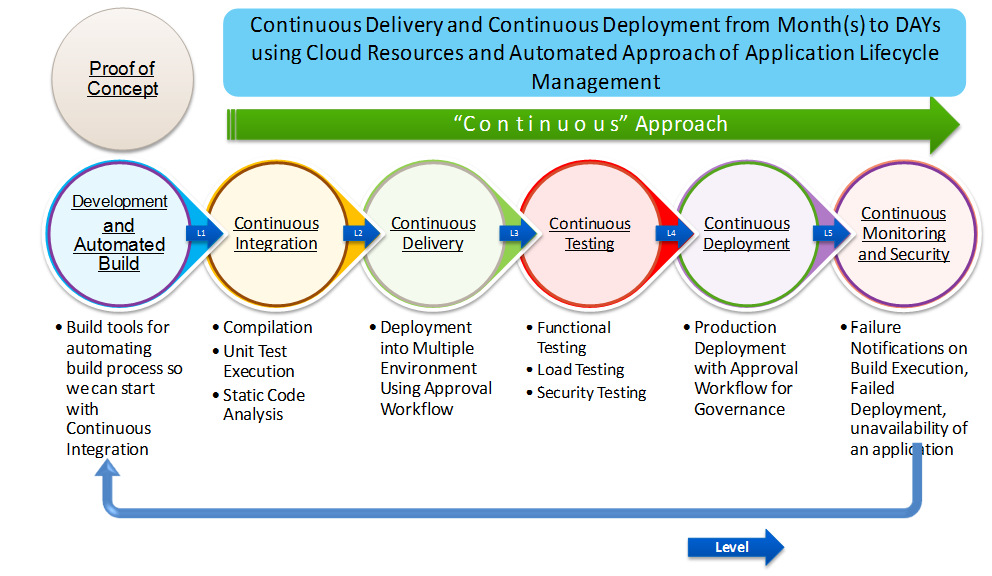Inefficient estimation, a long time to market, and other issues led to a change in the waterfall model, resulting in the agile model. Evolving a culture is not a time-bound or overnight process. It can be a step-by-step and stagewise process that can be achieved without dependencies on the other stages.
We can achieve continuous integration without Cloud Provisioning. We can achieve Cloud Provisioning without Configuration Management. We can achieve Continuous Testing without any other DevOps practices. The following are different stages to achieve DevOps practices:



























































